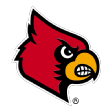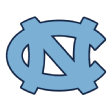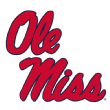This season, we’ve become accustomed to many strange things: no fans or very few in arenas; games being cancelled; and championships being awarded in leagues where teams played very different numbers of games.
Now, in the wake of Duke’s 91-73 loss at North Carolina, it appears we’re about to see an NCAA tournament played without the Blue Devils. That hasn’t happened since 1995.
Naturally, there’s always the possibility Mike Krzyzewski’s team catches fire in the ACC tournament and captures the league’s automatic bid. Seeing mighty Duke take on the role of a plucky bid thief in Greensboro, North Carolina, would certainly be one more amazing sight to add to the 2020-21 file.
Short of a miracle run to the ACC tournament title, however, the Blue Devils are now down to hoping for a once-in-a-century alignment of the at-large selection stars. Could that really happen? See below: “Duke Blue Devils,” under “Work to do.” Short version: Duke needs every other bubble team to lose games left and right and, alas, those teams will on occasion play each other.
Keep in mind these possibilities are being gamed out here at Bubble Watch just days before Selection Sunday for a team that was ranked No. 9 in the preseason AP poll, No. 9 by Bart Torvik and No. 2 by Ken Pomeroy. Nobody saw this coming, least of all Duke.
An unforeseen and extraordinary series of events has landed the Blue Devils here, and now they need an equally improbable sequence of outcomes to reach their 25th consecutive NCAA tournament.
Here’s our current projection of the bubble:
Bids from traditional one-bid leagues (minus the Ivy): 20 teams
Locks: 32 teams
The bubble: 25 teams for 16 available spots
Should be in: 5 teams
Work to do: 20 teams
ACC | Big 12 | Big East | Big Ten | Pac-12 | SEC | American | Others
ACC
Locks: Virginia, Florida State, Clemson
Should be in

The day before a scheduled home game against Louisville, Virginia Tech announced that the contest was canceled due to a COVID-19 “contract-tracing review” in the Hokies’ program. The news landed at a time when Mike Young’s team was coming off a dominant 38-point win over Wake Forest. Virginia Tech is projected as a No. 8 seed. Bubble Watch HQ sends best wishes to the Hokies for good health and a return to action sooner rather than later.
Work to do

On consecutive Saturdays, Louisville played road games at North Carolina and Duke. In the game against the Tar Heels, Chris Mack’s team was playing its first competitive basketball in 19 days due to a COVID-19 pause. It showed. The Cardinals lost by 45 to UNC, and missing the NCAA tournament entirely suddenly seemed a tangible, if remote, possibility. But then, in the second leg of its Tobacco Road visit, Louisville prevailed over Duke 80-73 in overtime. That gives the Cards a season sweep over the Blue Devils and halts a slide in the projected bracket that landed this team on the No. 10 line. Louisville will close the season at home against Virginia.

Let us have no more of this “struggling blue-chip programs” talk. Feast your eyes instead on North Carolina. Yes, for reasons that remain obscure, Marquette is clearly UNC’s kryptonite. But as long as the Tar Heels can safely avoid the Golden Eagles in the field of 68 (Roy Williams may be watching the Big East tournament closely), it bears mention that this rotation is looking increasingly potent as Selection Sunday draws nearer. It’s been three weeks since an ACC opponent scored a point per possession against this defense, and the one-possession loss at Syracuse was bracketed by wins over Florida State and Duke. The projected No. 10 seed is a new experience for North Carolina, no doubt, but the basketball being played by the Tar Heels is looking more and more familiar.

Anyone wondering how a team should go about playing its way into the tournament would do well to study Georgia Tech. Following victories over Virginia Tech, Syracuse and Duke, the Yellow Jackets went from “first four out” status to a projected No. 11 seed in the space of just three days. Josh Pastner’s team closed out its regular season with a 12-point win at Wake Forest, and the final numbers from conference play testify to a dramatically improved offense led by Moses Wright and Jose Alvarado. Georgia Tech is within striking distance of the program’s first NCAA appearance in 11 years.

There are two forms of suspense attached to the Orange in 2021. There is, of course, the question of whether Syracuse can lift itself out of its current “next four out” status and reach the NCAA tournament. In addition to that uncertainty, however, there’s the issue of whether this team will record a Quad 1 win this season. That answer can change, literally, daily. One day not long ago, NC State was ranked No. 75 in the NET, rendering the Orange’s win over the Wolfpack in February a Quad 1 win. The next day, Kevin Keatts’ group slipped to No. 76, and the game against Syracuse retroactively shifted into the Quad 2 category. There’s a similar spectator sport to be had with regard to the win at home over Clemson and whether the Tigers are above or below No. 30 on a given day. Grab some popcorn and watch those rankings.

Say Duke makes it all the way to the ACC tournament title game before losing. Can the Blue Devils still earn an at-large bid? If Duke reaches the ACC title game, it will be because the Blue Devils have defeated Boston College, Louisville, Florida State and Virginia Tech. The Eagles notwithstanding, those other three potential opponents are all ranked in between Nos. 10 and 60 on the NET. So, sure, those three wins would give Duke a nice boost — but Mike Krzyzewski’s team is instead trying to leap a vast canyon. While Duke is going on its theoretical four-game win streak, other bubble teams will have to lose. It would be an easier lift for the Blue Devils to just win five games (which, to be clear, is no easy lift) and grab the automatic bid.

Big 12
Locks: Baylor, Oklahoma, West Virginia, Texas, Kansas, Texas Tech, Oklahoma State
Oklahoma State is shown here as a “lock” to make the tournament. OSU is appealing an NCAA ruling that would prohibit the men’s basketball team from postseason play. As long as that appeal is still under consideration by the NCAA, this season’s team would be allowed to participate in the tournament.

Big East
Should be in

Now that Villanova is trying to find its way without the injured Collin Gillespie and Creighton is dealing with a coaching suspension, there’s a fair possibility the best team in the Big East at this moment is UConn. The Huskies have been blowing opponents off the floor, with the latest example being a 98-82 dismantling of Georgetown in Storrs. With their Big East season completed, Dan Hurley’s men can lay claim to easily the league’s best defense as well as an increasingly dominant scorer in James Bouknight. Purveyors of mock brackets have noted all of the above, and in the space of eight days UConn ascended from the No. 12 line to a No. 9 seed. Some unlucky top seed could get more than it bargained for in the round of 32 from the Huskies.
Work to do

If there’s one team that is really puzzling the committee right now, it might be Xavier. Wins over Oklahoma and Creighton are highly impressive. Yet the victory over the Bluejays came in the midst of a stretch in which the Musketeers have now lost four of their past six. Xavier’s NET ranking topped out in the high 40s even after taking down Creighton, but it will now slide back into the worrisome 50s. Travis Steele’s team was envisioned as a No. 11 seed prior to the loss at Georgetown. Now the Musketeers are hanging by a thread, and the season finale at Marquette takes on added importance.

When Bubble Watch last checked in on the Pirates, a forecast was made: “If up-and-coming teams elsewhere on the bubble keep winning, Seton Hall could be bumped out of the projected field entirely.” Silly Bubble Watch! That’s not what happened at all. Instead, the Pirates bumped themselves out of the projected field. Losing by 11 at home to UConn means that Seton Hall is now on the outside looking in. Kevin Willard’s team has a road date left at St. John’s and, win or lose, it’s safe to say that there will be work to be done for this team at the Big East tournament.

Big Ten
Locks: Michigan, Ohio State, Illinois, Iowa, Wisconsin, Purdue
Should be in

Though the Terrapins’ remarkable late-season surge came to an end with a five-point loss at Northwestern, Mark Turgeon’s team has still dramatically improved its position in the span of just two weeks. Maryland wasn’t even in the projected field of 68, but then wins over Minnesota, Rutgers and Michigan State as well as two victories over Nebraska lifted the Terps all the way to a potential spot on the No. 9 line. Turgeon’s group has to take care of business at home against Penn State in the season finale, and then countless opportunities for seed-improving Quad 1 wins will await at the Big Ten tournament.

Nothing helps a struggling bubble team quite like a struggling opponent that has already played its way out of at-large contention. Rutgers appeared to be in a bit of bracket peril after a profile-damaging 21-point loss at Nebraska capped off a stretch of three defeats in four outings. But Steve Pikiell’s men managed to pick up an overtime win at Minnesota in the season finale. The Scarlet Knights were being projected as a No. 10 seed at tipoff, which suggests that the program has indeed secured its first NCAA tournament bid in 30 years. An 0-1 showing by Rutgers at the Big Ten tournament, for example, would not appear to be a bid-stopper if, as seems plausible, the winning team in that game is a NET top-75 opponent.
Work to do

If you’re right on the edge between being in and out of the field, as Michigan State is, you could do worse than end the regular season with back-to-back games against a projected No. 1 seed. The Spartans dropped the first leg of their series against Michigan by 19 in Ann Arbor, and the rematch will occur in East Lansing on Sunday. A win would be self-evidently enormous for MSU, and, anyway, losses to an opponent as strong as the Wolverines aren’t going to harm one’s profile unduly. One more defeat would leave Michigan State at 14-12 and 8-12 in the Big Ten. That second mark, at least, was good enough for Ohio State to earn a No. 11 seed in 2019.

Pac-12
Should be in

The Bruins have been shown as a No. 9 seed in mock brackets for three weeks, but that may be about to change for the worse. Mick Cronin’s men closed the season by losing three in a row, and the last defeat in particular was a heartbreaker. USC’s Tahj Eaddy drained a 3 with one second left in the game to lift the Trojans to a one-point win over their archrival in Pauley Pavilion. The end-of-season losing streak means this team could be projected as a double-digit seed sooner rather than later. That’s not the end of the world, of course, for a group that’s still comfortably in “Should be in” territory. It is, however, a different March outlook than the Bruins expected just three games ago.

SEC
Locks: Alabama, Arkansas, Tennessee, Missouri, Florida, LSU
Work to do

While the “last four in” and “first four out” claim the lion’s share of the attention, diligent students of the bubble know there’s precious knowledge to be gained among the “next four out” as well. This last category has been where you could find Ole Miss making occasional appearances these past few weeks. While losses over that time at home to Mississippi State and on the road to Vanderbilt weren’t necessarily terrible, they didn’t help boost the profile, either. Now, however, one home victory over Kentucky later, the Rebels are back, with a NET ranking in the 50s and stories to tell the committee about beating Tennessee and scoring a season sweep over Missouri. Ole Miss will wrap up the regular season at home against the Commodores.

American
Locks: Houston
Work to do

With a win at home over Houston to its credit, Wichita State entered mock brackets in the last week of February as one of the last teams in the field. The Shockers have maintained that position ever since, and, barring a bad loss at the American tournament, Isaac Brown’s group might not get an opportunity to improve its projected seed to any significant extent. Any rematch with the Cougars, for example, could take place in the American title game, in which case another “big” victory over Kelvin Samson’s team would also hand WSU the automatic bid.

Maybe someday in the far off future the committee will be replaced entirely by a metric that measures how difficult it would be to duplicate any team’s wins and losses given the opponents and venues where that record was compiled. When that happens and “strength of record” (SOR), “wins above bubble” (WAB) or something similar is in the driver’s seat, it will be good news for SMU. In a SOR world, the 11-4 Mustangs would be a No. 10 seed. In the real world, however, Tim Jankovich’s men rank in the high 50s on the NET and inhabit the far outer fringes of the bubble. Keep winning, SMU.

Careful observers of mock brackets have watched with mounting interest these past few weeks as Memphis has climbed steadily closer to the cut line. The Tigers aren’t in the field yet, but they’re close enough to the last at-large bid to merit consideration here at Bubble Watch. With a NET ranking right around No. 60, Penny Hardaway’s team has one beautiful opportunity remaining at Houston. Needless to say, a road win against the Cougars is the richest prize, by far, the American has to offer. Capturing that prize could well lift Memphis up into the “last four in” or “first four out” territories.

Others
Locks: Gonzaga, BYU, Loyola Chicago, San Diego State
Work to do

Head coach Mark Schmidt is being “mentioned consistently” for the opening at Boston College, but before he considers or rejects any feelers, his Bonnies have a shot at a single-digit seed. St. Bonaventure is shown in projected brackets on the No. 10 line, and Osun Osunniyi & Co. have reached the A-10 semifinals as the top seed in the conference tournament. The next opponent will be Saint Louis, and a win over the Billikens on a neutral floor would qualify as a Quad 1 victory. On the other hand, a loss would most likely land the Bonnies in the NCAA field as a double-digit seed.

Nah’Shon Hyland sat out two games with a foot injury and then returned for the Rams’ A-10 quarterfinal against Dayton. The sophomore was outstanding, recording a 30-10 double-double to go along with three steals. Having Hyland back and at full speed is great news for a VCU team that was already playing conference tournament basketball in its home arena as a projected NCAA No. 11 seed. The Rams might need that home-court advantage. Their next opponent, would-be bid thief Davidson, looked pretty tough in rolling over George Mason 99-67.

Thanks to a game-winner from Joseph Yesufu with 2.5 seconds remaining, Drake has, in effect, done all it can do at the Missouri Valley tournament to earn an at-large bid. If the Bulldogs lose now, it will be to Loyola Chicago. There’s no shame in that, surely, now that Yesufu’s heroics have propelled DU past Missouri State and into the finals. Drake could still hear its name called on Selection Sunday even in the event of a loss in the Valley finals, but that would be a close call. It would be much better for coach Darian DeVries’ nerves to just go out and grab the automatic bid. (Such an outcome would be fine with the MVC, too. The Ramblers are a lock, and a two-bid Valley would be a big deal.)

The Rams ended their regular season with an 85-82 loss at Nevada after the Wolf Pack’s Grant Sherfield hit a 3-pointer in the final seconds. The outcome qualifies as a Quad 2 defeat, and it capped off an intense stretch run in which CSU played four games within seven days. Wins at home over Air Force (twice) and New Mexico were followed by the setback in Reno. Niko Medved’s team was projected as a No. 11 seed prior to the loss, and it’s probable Colorado State will now enter the Mountain West tournament forecast as one of the last teams in or first teams out of the field of 68.

After Craig Smith’s men lost two games at Boise State by a total of 13 points, the bubble outlook looked grim indeed. Then a funny thing happened. Projected Nos. 11 and 12 seeds started falling out of the bracket, while a few “first four out” and “next four out” programs also encountered difficulties in winning games. Meanwhile, USU was quietly taking care of business with three wins at home, two against Nevada and one against Wyoming. This combination of faltering competitors and steady performance on Utah State’s part has lifted the Aggies back into the picture. The 50-something NET ranking still looks adequate, and the “sweep” of San Diego State (both games were played in Logan, Utah) is still impressive. USU has a chance.

The “Quad 4 loss on the second day of March” thing is not a good look. Boise State was being projected as a No. 11 seed before losing at home by three points to Fresno State. Now BSU’s tournament fate is very much open to question. Prior to the loss, the Broncos seemed as “safe” as a team on the No. 11 line can be, meaning Boise State had appeared in the consensus projected field every day over the course of the past month. That streak in the “fake” bracket will likely end, and the previously top-35 NET ranking will take a hit. BSU is very much in need of a strong showing at the Mountain West tournament.

Since losing back-to-back road games at Dayton and VCU last month, SLU has reeled off three straight victories and reached the semifinals of the A-10 tournament. As the No. 4 seed in this bracket, Travis Ford’s men will now face top seed St. Bonaventure. Should the Billikens prevail there, they could move off the “first four out” list and into the projected field. No, moving into the projected field eight days out from Selection Sunday is not at all the same thing as being a lock. It does, however, beat the alternative, which would be a loss at the hands of the Bonnies and a substantial — though not certain — probability of not receiving an at-large bid.

